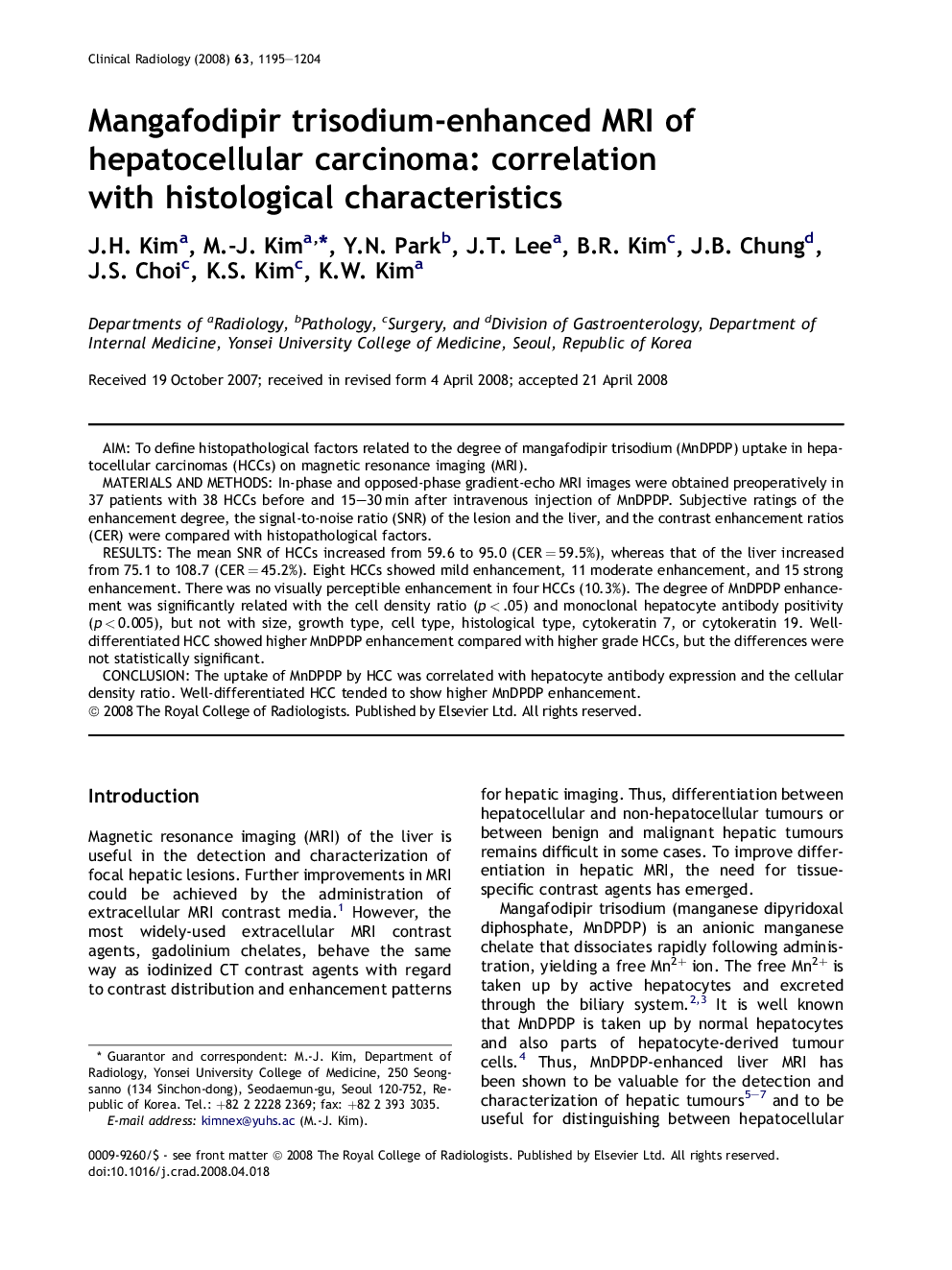| Article ID | Journal | Published Year | Pages | File Type |
|---|---|---|---|---|
| 3983122 | Clinical Radiology | 2008 | 10 Pages |
AimTo define histopathological factors related to the degree of mangafodipir trisodium (MnDPDP) uptake in hepatocellular carcinomas (HCCs) on magnetic resonance imaging (MRI).Materials and methodsIn-phase and opposed-phase gradient-echo MRI images were obtained preoperatively in 37 patients with 38 HCCs before and 15–30 min after intravenous injection of MnDPDP. Subjective ratings of the enhancement degree, the signal-to-noise ratio (SNR) of the lesion and the liver, and the contrast enhancement ratios (CER) were compared with histopathological factors.ResultsThe mean SNR of HCCs increased from 59.6 to 95.0 (CER = 59.5%), whereas that of the liver increased from 75.1 to 108.7 (CER = 45.2%). Eight HCCs showed mild enhancement, 11 moderate enhancement, and 15 strong enhancement. There was no visually perceptible enhancement in four HCCs (10.3%). The degree of MnDPDP enhancement was significantly related with the cell density ratio (p < .05) and monoclonal hepatocyte antibody positivity (p < 0.005), but not with size, growth type, cell type, histological type, cytokeratin 7, or cytokeratin 19. Well-differentiated HCC showed higher MnDPDP enhancement compared with higher grade HCCs, but the differences were not statistically significant.ConclusionThe uptake of MnDPDP by HCC was correlated with hepatocyte antibody expression and the cellular density ratio. Well-differentiated HCC tended to show higher MnDPDP enhancement.
